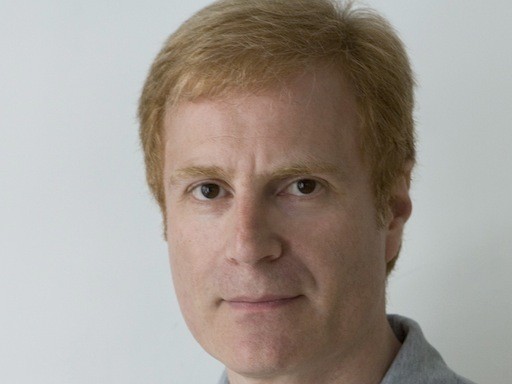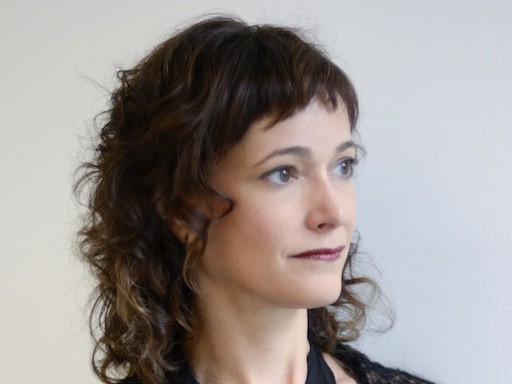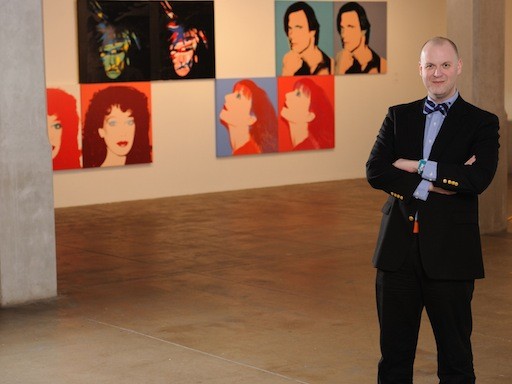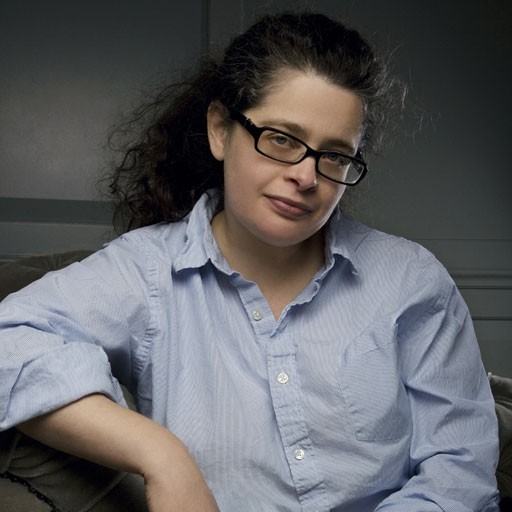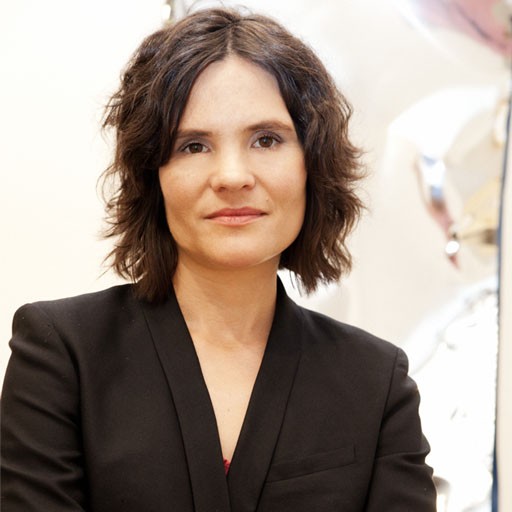A premier art advisor with more than 25 years in the industry, Todd Levin has worked with some of the world's foremost art collectors as the director of Levin Art Group, both buying and selling blue-chip and cutting-edge work on their behalf. Known for his curatorial eye and tough-minded expertise, Levin has helped build in-depth collections that are successful financially—delivering an "annual rate of return of over 30% for the past decade," he says on his website—and in terms of scholarship. (A glimpse of his approach can currently be seen at Sprüth Magers gallery in London, where he has organized "The Vivisector," a show contextualizing Cindy Sherman's disturbing mannequin and doll works with other work from 20th century art history.) To hear how an art advisor takes on a fair like Art Basel Miami Beach, we spoke to Levin about his strategy for navigating the event.
At right, see works from Artspace's own Art Basel Miami Beach collection.
As an art advisor, what do you look for at an art fair?
The real value of an art fair is in helping your clients build face-to-face relationships with gallerists from around the world who are all gathered together in one place. It’s best not to think of art fairs as a transactional modality, but rather as an educational opportunity.
How do you interact with clients at the fair? Do you tour the booths with them or work in some other fashion?
If an advisor has done their due diligence, they’ve gotten packing lists well in advance of the fair from each gallerist who will be attending and offering artworks their collector would be interested in. The collector will have already isolated (and potentially purchased) the work or works that might be most crucial to their specific interests in advance of any fair.
How do you navigate an art fair? Where do you go first? Who do you talk to?
The VIP vernissage hype is only real to those who allow themselves to be sucked in by it. If a VIP vernissage opens at 11 a.m., I’ll probably walk in with my client at 11:30 a.m. or noon so we don’t have to deal with that initial crush. The foaming frenzy of desperation some people get wrapped up in is one of the extreme negatives of any fair.
What was the last acquisition you made at an art fair? When and where?
A discreet art advisor never buys and tells.
When you make a purchase, how does the conversation go? How do you negotiate prices?
People have a misconception that 10 percent is standard discount. Every discount is negotiated on a case-by-case basis. A good advisor knows when to push, and when not to. Sometimes advisors have better access when it comes to discounts, meaning that a collector on their own might receive 10 percent, but with an advisor they might receive 15 percent (or more). Sometimes if a collector is new but has the potential to become a serious repeat client, a gallerist might initially offer a slightly larger discount in order to strategically kick-start and build that relationship. Having said that, if it is a young artist or a young gallery and a relatively inexpensive work we are discussing, let’s say under $20,000, I don’t believe in asking for a discount, because you’re taking money out of a young artist’s and/or young gallerist’s pocket—money that is needed to pay for a gallery and/or studio livelihood at the beginning of a career.
What was the most significant discovery you ever made at an art fair?
A discreet art advisor never discovers and tells.
What kind of information are you most skeptical of at a fair? (I.e., reports of sales in the press, etc.)
Anyone or anything discussing quantification of an artwork, as in price, as opposed to discussing qualification, as in value. Price and value are two completely separate concepts, but people confuse them with alarming regularity.
In what ways are art fairs better venues for making acquisitions than auctions? In what ways are they worse?
I don't have to get on a plane and fly between three and 16 hours to attend the major auctions.
How are you planning to tackle the fairs in Miami this week? In other words, how will you structure your time down there?
First Art Basel Miami Beach. Then NADA.
What kind of gear do you bring to an art fair? (E.g., a notebook, camera, bottle of water.)
Chocolate covered Klonopin to hand out to the gallerists! But seriously, well-fitted, comfortable shoes—the single most important asset—and my iPhone are all I require.
What is the worst art-fair faux pas?
Reserving anything. I don’t believe in exercising reserves or holds while at fairs—it’s unfair to the gallerists who are there under extreme financial pressure. Things held for me in advance of a fair are done with the proviso that it is only subject to my visual inspection, meaning that unless it is damaged or misrepresented, I will buy it.
What is your opinion of art fairs, generally speaking?
Art fairs have come to constitute their own mini-economy in and of themselves, and an understanding of their internal logic and means of operation is applicable to our understanding the art market in general. To quote [University of Amsterdam sociologist and anthropologist] Olav Velthuis, “Art fairs have become ‘tournaments of value,’ or status contests. At stake in such art fair 'tournaments' is not only a simple economic transaction, but the establishment of the perceived rank of artists’ importance, as well as the status and fame of the collectors who can afford, and can prove they have the access to, the art work on sale.”
Escalating prices of established contemporary artists, combined with the continual hunger for the newest and youngest artists because they are opportunistically seen as the equivalent of financial IPOs, has resulted in art-world pedophilia, with collectors rushing the gates at young art fairs such as Scope, NADA, Pulse, and many others, desperately looking for the next hot possibility. This has further fueled a stratospheric secondary market for artists with only one gallery show under their belt who had no presence in the art world at all just a year or two before. Indeed, it’s worth noting that works by relatively young and critically untested artists regularly sold at the height of the market in 2007 for six (and seven!) figures.
The aesthetic meaning of art collapses under this brute weight of price at art fairs. According to Forbes, “When a product becomes indistinguishable from others like it and consumers buy on price alone, it becomes a commodity”—and we can see that breakdown of meaning with our own eyes. Art, in one way or another, has always offered me a way to understand myself better. But at places like art fairs, art and money exchange roles: money becomes ‘divine’ by being translated into art, and art becomes commonplace by being translated into money.
Therefore, it is impossible to see or interact with art in any meaningful way at art fairs as they currently exist. Art fairs are not places where aesthetic or intellectual fields of value are created. Art fairs are competitive fields where the destruction of aesthetic and intellectual values takes place for the benefit of consumptive value. This results in “art-fair art,” a proliferation of meretricious art called into being by market demands that has what one might call ‘wall power,’ a kind of immediacy, a style of ingratiating effect, and often jumbo, economy-sized scale. In short, "art-fair art" has the ability to stand out among so many other artworks in a crowded salon-like setting where everything is clamoring for your attention in the midst of a total visual and sensory overload.
This overload also includes the social spectacle of the art fair. You only have to open a lifestyle or fashion magazine to find articles on Art Basel Miami Beach, the attendant parties and dinners, and what the artists are wearing. Art fairs are now staged as purely theatrical events, despite their attempt at window-dressing themselves as intellectually serious with a few panel discussions thrown into the mix. Art fairs have become an extension of our ‘experience economy’—an ad-hoc mixture of show business, Hollywood, and Wall Street.
Q&AAn Art Advisor's Guide to Art Basel Miami Beach, With Todd Levin
